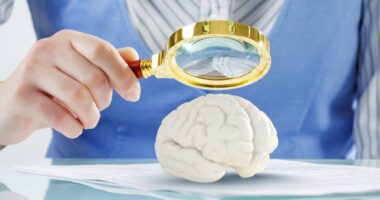Model may help develop medicines that cross blood-brain barrier
Effort hailed as 'important advance' toward treating neurological diseases

Researchers in the U.S. have created the first brain-like organoids, or mini-brains, that incorporate a working blood-brain barrier (BBB), which is the membrane that regulates which circulating substances can reach the brain and spinal cord, and that typically challenges the entry of medications.
Called a BBB assembloid, the human model can serve as a platform to test how and if new medications for neurological diseases like Huntington’s can get into the brain where they’re most needed.
“Lack of an authentic human BBB model has been a major hurdle in studying neurological diseases,” Ziyuan Guo, PhD, of Cincinnati Children’s Hospital Medical Center, said in a center press release. Guo called the assembloid “a faithful representation of the barrier in growing, functioning brain tissue.”
“This is an important advance because animal models we currently use in research do not accurately reflect human brain development and BBB functionality,” Guo said.
How the BBB assembloids were built was described in “Modeling blood-brain barrier formation and cerebral cavernous malformations in human PSC-derived organoids,” which was published in Cell Stem Cell.
The blood-brain barrier is a highly selective membrane that prevents potentially harmful microbes and molecules in the bloodstream from accessing the brain and spinal cord, while allowing essential nutrients and certain molecules to pass through.
Because the BBB also denies access to potentially helpful medicines, predicting how and which molecules can cross it may help develop therapies for neurological diseases that can reach their target tissues.
Unlike brain cells grown on a flat surface in the lab, brain organoids are tiny brain-like structures that take on a spherical shape and more fully mimic the properties and cellular interactions of the human brain than animal models do.
A working BBB, made from stem cells
Here, Guo’s team collaborated with researchers at the Mayo Clinic and the University of California, San Diego to grow brain organoids together with blood vessel organoids to form a working BBB.
To do this, they used human pluripotent stem cells, a cell type that can develop into many different types of cells when given the right cues. The stem cells were separately matured into brain or blood vessel cells that self-organized into organoids.
When the researchers grew brain and blood vessel organoids together, they formed single spheres with a diameter of about 4 mm, or an eighth of an inch. These assembloids had tube-like structures about the size of human capillaries, the body’s smallest blood vessels.
The tube-like structures were wrapped by pericytes, which are cells that help maintain the BBB and control blood flow to the brain, along with astrocytes, star-shaped cells that hold nerve cells in place and help them develop.
To provide proof of concept that these BBB assembloids could mimic what happens in the human brain, the researchers then formed organoids using stem cells derived from people with a rare, genetic brain condition called cerebral cavernous malformation that’s marked by impaired BBB integrity.
BBB assembloids grown from those stem cells replicated key features of the disease, suggesting the platform may “represent a game-changing technology with broad implications for neuroscience, drug discovery, and personalized medicine,” Guo said. “Through stem cell bioengineering, we have developed an innovative platform based on human stem cells that allows us to study the intricate mechanisms governing BBB function and dysfunction. This provides unprecedented opportunities for drug discovery and therapeutic intervention.”
The researchers said a potential application of patient-derived BBB assembloids may be to serve as avatars to test what therapies are more effective for a given patient, based on their genetic and molecular profiles.







